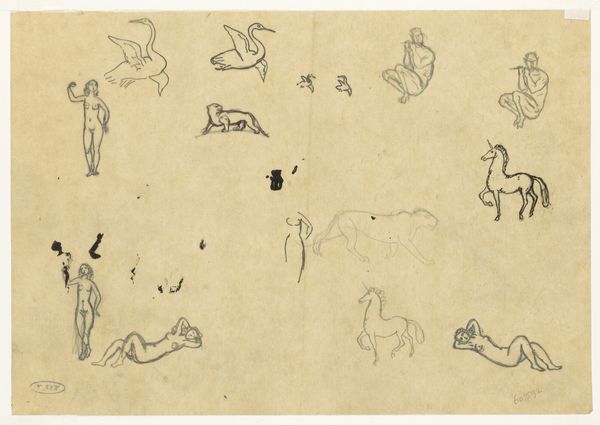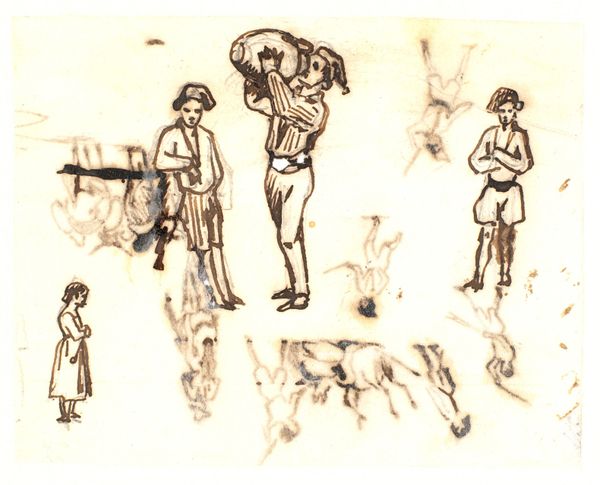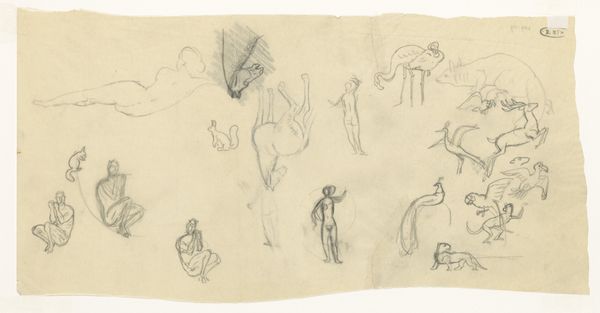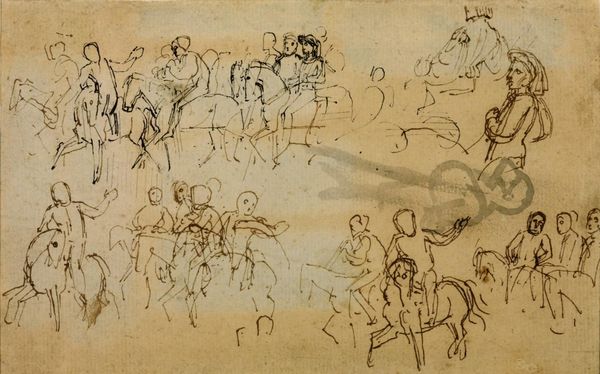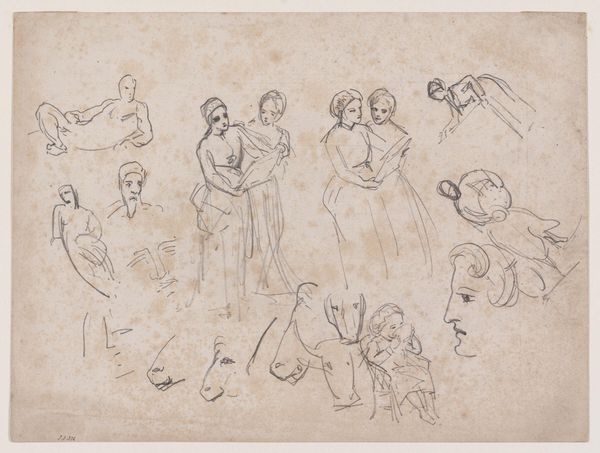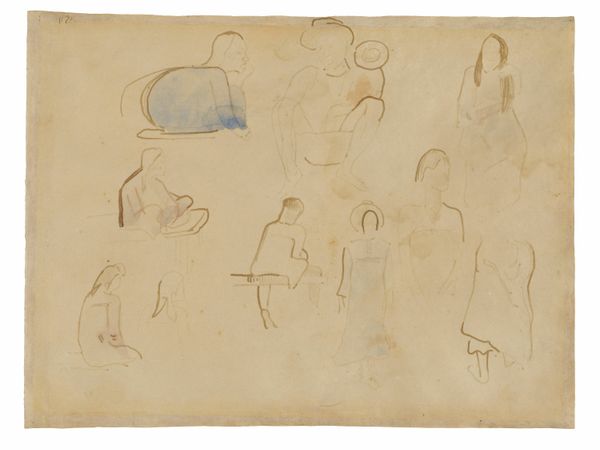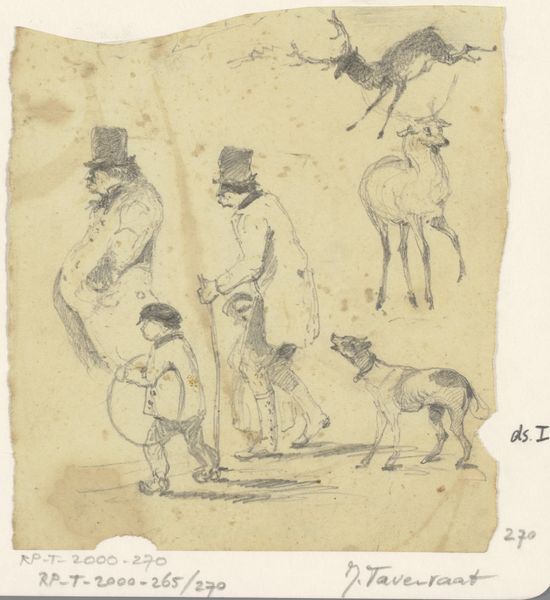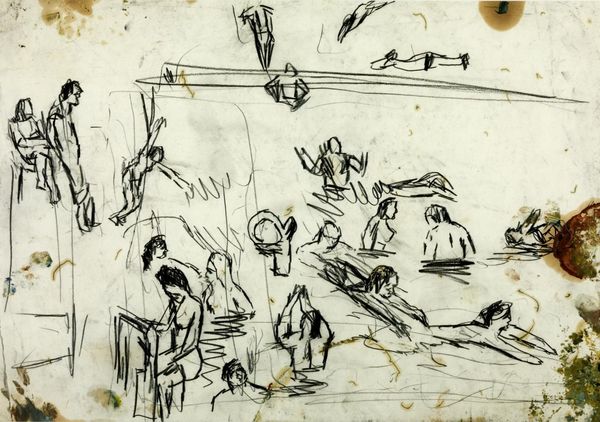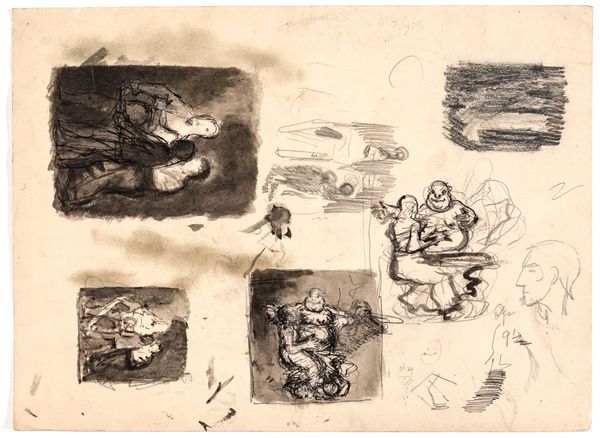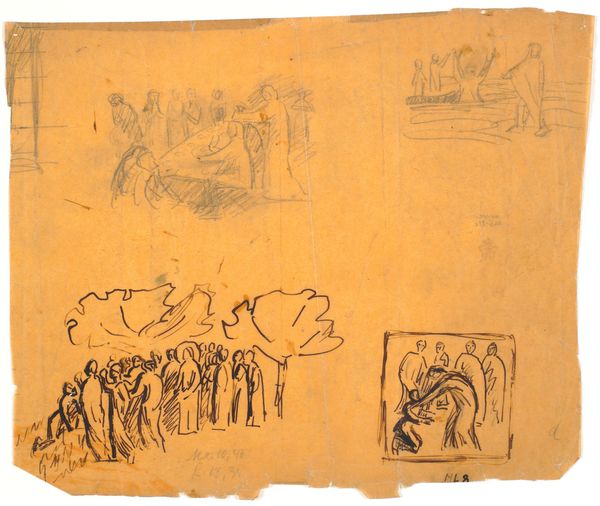
drawing, ink, pen
#
drawing
#
narrative-art
#
pen sketch
#
figuration
#
ink
#
ink drawing experimentation
#
sketchbook drawing
#
pen
#
watercolor
Dimensions: 88 mm (height) x 112 mm (width) (bladmaal)
Curator: Here we have "Italienske figurstudier," or "Italian Figure Studies," a drawing made between 1840 and 1841 by Martinus Rørbye. It resides here with us at the SMK, made with pen and ink. Editor: It’s very lively, almost frenetic. I see figures in various poses – some on horseback, others wielding what appear to be sticks. The lines are quick and sketchy. It really captures a sense of movement. Curator: Rørbye's process is quite evident here. We can see the layering of his strokes, the way he's testing out different compositions directly on the page. It provides great insight into his method of visualizing a subject through a kind of visual iteration, moving towards a refined articulation. It looks like he made the drawing on the road, or at least far from a studio environment. Editor: Those sticks are quite striking, though. The repeated image of figures brandishing them…it almost feels ritualistic, or perhaps a form of conflict? Is he hinting at power dynamics or perhaps even some folk traditions that he observed in Italy? Curator: It's fascinating how readily we leap from materiality to meaning! Consider the cost of materials at that time, and the purpose of quick sketches, like watercolor being available on the market... all were key in how Rørbye built his visual vocabulary. Editor: I see your point, the choice of inexpensive materials is always informative, however, I think the imagery transcends mere economic concerns. These aren't just random figures; there is symbolic significance in the suggestion of conflict or possibly celebration and the figure with weapons. It evokes historical references, the visual culture of Southern Europe and perhaps the artist's romantic ideas about that area. Curator: Perhaps, or maybe that visual culture becomes a mere raw material, subject to a whole host of economical factors... Ultimately, it comes down to our ability to interpret how images and social standing relate to available materials, as well as art history... It truly broadens our appreciation of his work. Editor: Indeed, the dance between material constraints and iconographic choices makes it so rich! Curator: It does provoke questions about not just the work’s purpose but the choices the artist made along the way when it comes to sourcing art.
Comments
No comments
Be the first to comment and join the conversation on the ultimate creative platform.
